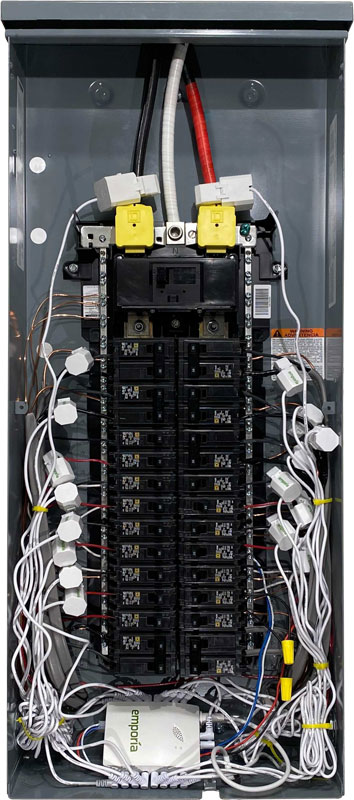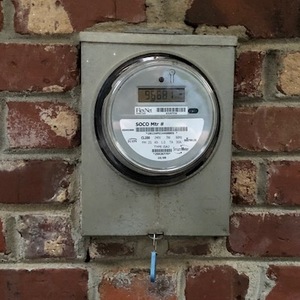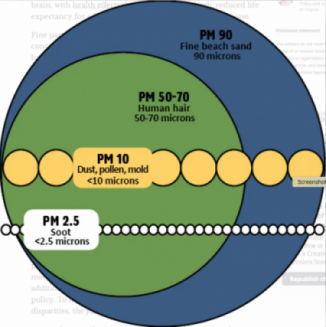
This is the third post in a four-part series covering the topic of data logging in terms of Home Applications, Products and Performance, Types of Monitoring, and Indoor Air Quality.
There are sensors and loggers for all kinds of measurements in residential buildings. One of the most useful measurements is wood moisture content. This can be done by measuring portions of a building and/or measuring the wood going into a building during construction. Wood takes up and releases moisture slowly and can be a useful means for monitoring long-term changes in moisture levels within an assembly—typically the thing we’re most concerned about in a wood-framed building.
As noted in my last post, Omnisense has a somewhat expensive but very practical (i.e. easy to use) setup designed to record wood moisture content over the long term. Another method is to wire up a piece of wood with pins connected to a reader—this measures long-term moisture within insulation or other locations where common humidity meters are not suitable. (Standard humidity sensors are only suitable for places where condensation doesn’t happen).
Flow rate
Here at BOWA, we had a situation where a water-to-air heat pump in a condo building was misbehaving. Our installer said the problem was inadequate water flow, but the building staff pointed out that other systems on the same tier of pipes were not having problems, so they thought it was the heat pump itself. We installed a flow meter on the unit, and because we wanted real-time access, hooked it up to an Internet-connected logging system. Surprisingly, the Z-Wave radio transmitter and receiver, Windows 7 computer, WiFi, and three software programs all worked correctly for six weeks straight.
The system seemed to work just fine and had adequate flow and temperatures while we monitored it. We deduced that the flow was partially blocked before we installed the monitoring setup. The building engineers did a bit of maintenance on the pipes—what amounted to banging on the elbows with pipe wrenches to loosen any partial clogs. The most likely explanation for the earlier failures (before monitoring) and the later success (while monitoring) is that the flow rate was lower before we put in our setup. We also closed and reopened the valves on the pipes going to our machine, which may have been partly closed or occluded.
Manometer
I’ve never used this myself, but Infiltec sells a micromanometer that will log pressures. I looked for one of these years ago, when I had a house with a boiler whose spill switch kept tripping, and I suspected a house pressure issue was causing it. Ultimately, it was less expensive to install an outside-air inlet to the boiler room than to record what was happening. This is not an uncommon situation, and while my general inclination is to fully understand a problem before trying to fix it, I must admit that the equipment and the time required to measure problems can cost as much or more than trying the most likely fix and seeing if it corrects the problem—always a judgment call.
Electrical monitoring
Watching where the power goes in a house is entertaining and can teach you a lot. For example, it can alert you to issues with high-efficiency equipment. This is particularly important with heat pumps that have inefficient backup resistance heaters; it’s good to realize when those are operating so you can fix the primary system quickly.
Generally speaking, there are two types of electricity-use monitors: whole-house and circuit-by-circuit. The whole-house type (as I’m calling them here) include Sense and some others that record the energy usage of the whole house and rely on software to sort out what’s running at a given time. Many electrical devices consume power in a predictable manner. A set of lights will use the same amount of power whenever they are switched on; a refrigerator motor will run at the same power rate every time; and whenever the total load goes up or down by that exact amount, the software can detect that load is on.
However, many loads don’t use the same amount of electricity every time. Instead, they run at a higher or lower speed based on, for example, the load on the HVAC system or how full the car battery is. The software-dependent systems struggle to pick up these varying loads, so they aren’t a good choice when these are among the main things you want to monitor.
Circuit-by-circuit systems have many sensors, enough to cover all the main loads in a house and sometimes every individual circuit. I’ve been using Emporia Power’s version, which is available with 8 or 16 circuit sensors (plus two for the main lines). Installation isn’t hard but it requires a lot of stuff be crammed into a small space in the circuit panel. I was impressed with what I learned in the first few weeks of use. To start, my furnace fan—far from being a “pennies a day” user—is the second largest load in my entire house at over 800 watts. The heat-pump water heater, on the other hand, uses only 450 watts and runs for less than an hour a day. This is great information to have, and if something unusual happens, I should be able to see it quickly.
Emporia Power has competitors that offer products that also monitor voltage, which can be useful for certain diagnostics. (Emporia measures voltage on one phase to create accurate usage records but doesn’t offer access or logging of voltage as of this writing.) One of the more intriguing ideas is power management and monitoring electrical panels, which not only provides circuit-by-circuit electrical use but also turns entire circuits on and off via software. This can be helpful when using backup power or when trying to work effectively with time-of-use pricing. Schneider has a Square D panel product that does all this, plus has room for solar and battery/generator backup power. Where Sense and Emporia cost under $300, one of these elaborate panels can cost $3000. But they offer capabilities no one else has.
The next post in this series will be about indoor air quality.
_________________________________________________________________________
Doug Horgan is vice president of Best Practices at BOWA in Washington, D.C.
Weekly Newsletter
Get building science and energy efficiency advice, plus special offers, in your inbox.














6 Comments
In previous discussions on GBA of the different electrical power monitoring systems, IotaWatt emerged as the favorite. Based on that input, I installed one and I like it a lot. You can dig into the data as deeply as you want, including current, voltage and even frequency as well as power. It can monitor 14 channels, usually the main feeds plus 12 individual circuits. A basic setup costs under $200; if you want to add monitoring of 12 individual circuits, the cost goes up close to $300. And it's an open-source project.
This may be a moot point, but what does the electrical code say about all that additional wiring and device being located in the main panel?
I'm not sure about locating the device itself within the main electrical panel. I can say that 5-6 years ago I installed a Greeneye energy monitor from Brultech in my panel, and chose to mount the electronics in an external box. The data it provides has been very interesting. But as for all the CT wiring, my electrical inspector had no comments, beyond curiosity.
That's cool. What have you used the data for? Has it changed your lifestyle or allowed you to make different decisions?
That's definitely a legitimate concern. My understanding is the device & sensors are listed and approved to be used as long as all of them are inside the box, with only the wifi antenna extending outside the box, through a normal punchout opening. I think it would be a different story if you had a bunch of wires leaving the protective enclosure.
Could we get a list of the other article links at the beginning of each article? And update all articles with the complete list (especially when the series is complete)? Please and thank you.
Log in or create an account to post a comment.
Sign up Log in